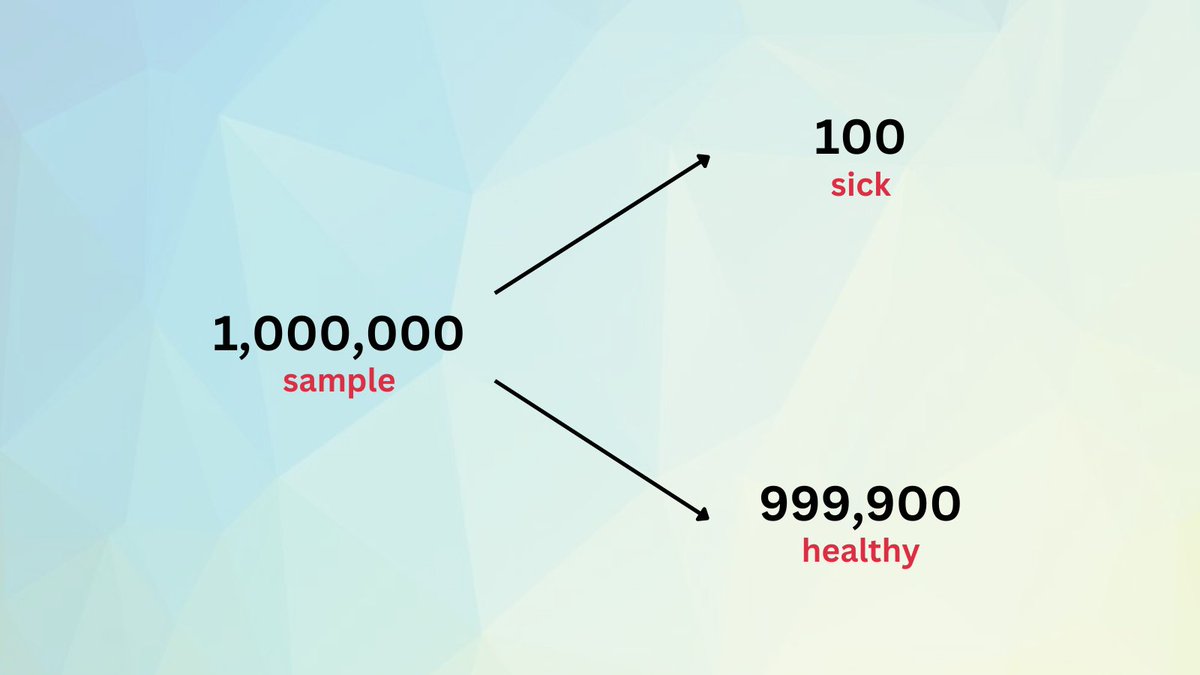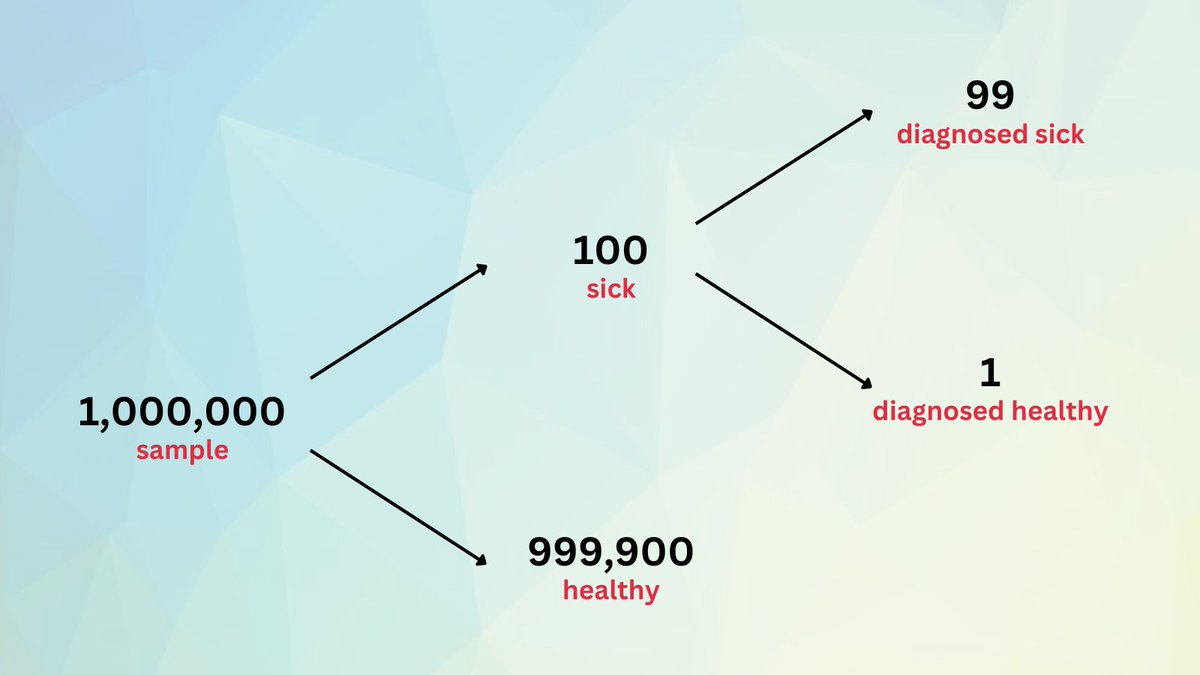A surprising statistical result 🔽
You have tested positive for a disease.
- The test is 99% accurate.
- 1 out of 10,000 people has the disease.
What is the probability that you truly have the disease, given that you have tested positive?
Let's figure out
🧵
You have tested positive for a disease.
- The test is 99% accurate.
- 1 out of 10,000 people has the disease.
What is the probability that you truly have the disease, given that you have tested positive?
Let's figure out
🧵

Look at a random group of 1 million people.
Fact 2 says 1 out of 10,000 people has the disease.
In our sample, 100 people have the disease, and 999,900 are healthy.
Fact 2 says 1 out of 10,000 people has the disease.
In our sample, 100 people have the disease, and 999,900 are healthy.

Run the test on the 100 sick people.
Fact 1 says the test is 99% percent accurate.
- 99 people will be diagnosed correctly as sick.
- 1 person will be misdiagnosed as healthy.
Fact 1 says the test is 99% percent accurate.
- 99 people will be diagnosed correctly as sick.
- 1 person will be misdiagnosed as healthy.

Now test the 999,900 healthy group.
The test makes 1% mistake.
1% of these 999,900 healthy people are misdiagnosed as sick.
The test makes 1% mistake.
1% of these 999,900 healthy people are misdiagnosed as sick.

Putting it all together:
- the total number of people who tested positive is 99 + 9,999 = 10,098.
- Out of these, only 99 are sick.
Therefore the probability that you have the disease is 99/10,098 = 0.0098
Less than 1%!
- the total number of people who tested positive is 99 + 9,999 = 10,098.
- Out of these, only 99 are sick.
Therefore the probability that you have the disease is 99/10,098 = 0.0098
Less than 1%!

Why do we have this surprising result?
People tend to focus on fact 1, the 99% accuracy.
But fact 2 is also crucial. 1 out of 10,000 means 0.01%
The 1% is much larger than the 0.01%
In other words, the error rate is larger than the rate of being sick.
People tend to focus on fact 1, the 99% accuracy.
But fact 2 is also crucial. 1 out of 10,000 means 0.01%
The 1% is much larger than the 0.01%
In other words, the error rate is larger than the rate of being sick.
That's it for today.
I hope you've found this thread helpful.
Like/Retweet the first tweet below for support and follow @levikul09 for more Data Science threads.
Thanks 😉
I hope you've found this thread helpful.
Like/Retweet the first tweet below for support and follow @levikul09 for more Data Science threads.
Thanks 😉
https://twitter.com/levikul09/status/1703336751291576426
If you haven't already, join our newsletter DSBoost.
We share:
• Interviews
• Podcast notes
• Learning resources
• Interesting collections of content
dsboost.dev
We share:
• Interviews
• Podcast notes
• Learning resources
• Interesting collections of content
dsboost.dev
• • •
Missing some Tweet in this thread? You can try to
force a refresh

















